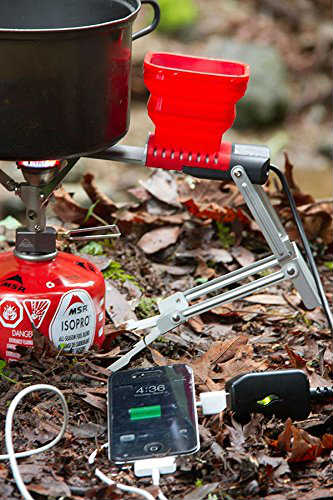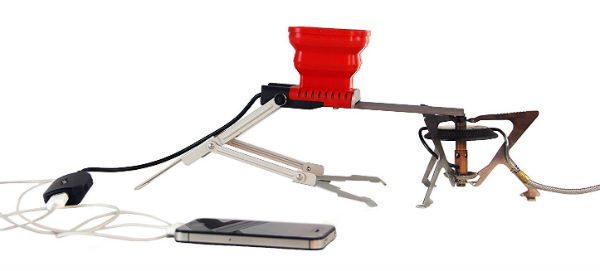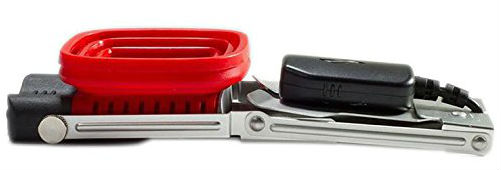
Can you imagine what the first humans thought when they were able to create fire for the first time? You can experience a tiny bit of that magic by harnessing the energy from fire to charge your gadgets. The FlameStower converts heat from a campfire into electricity that you can use to charge your USB devices.
This small device has a collapsible cup that you fill with water and a metal blade under that cup that you insert into the fire.

The fire heats the blade, which heats the water in the cup, which iturns into 2.5 watts (average) of power. That is enough to charge your phone in about 2.5 Hours or or if you don’t want to wait that long, it will provide about 2 minutes of talk time for every 1 minute of charge time.

The FlameStower is priced at $99.99. You can read more about it at stowerenergy.com and Amazon.

Gadgeteer Comment Policy - Please read before commenting
When I go backpacking with my buddies, we only use the stove about 5 min per person per day. That’s not enough to charge our phones, which we use for photos and GPS. Interesting that your Bushnell Mini SolarWrap review comes up in this page because that is what one of my buddies uses to charge his phone. I use a GoalZero solar panel instead. The other guys use power banks, since they are pretty sure they can make it home on schedule. Being an engineer, I want some margin in case of a contingency.
It’s enough to extend it a little, and with this you could always keep the fire going if you wanted to do a larger charge. It’s a bit heaver than the solar wrap, but can charge faster, and would work better in the emergency ‘I need the charge now’ or in a heavily wooded hike.
Depends on the situation, and your use. This is something I’d more likely throw in an emergency kit bag that’s supposed to work whenever, or possibly take on a long trek. (Or bring to a basecamp.) The solar panels are probably better for short (under a week or so) trips.